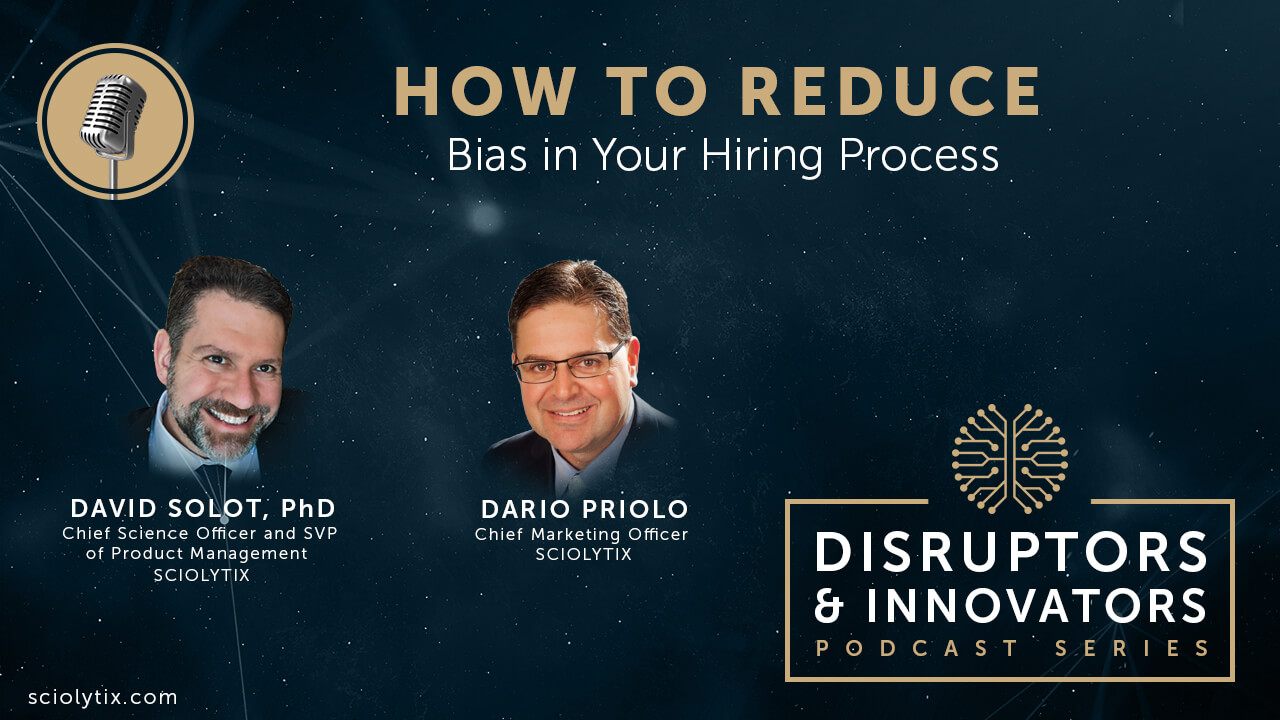
Here’s a statement that is sure to get your attention: We are all biased in the hiring process. Granted, not all of us know we are, and most of us don’t mean to be. We are good people, and we’d never purposely discriminate against someone. But no matter how well-intentioned you are, we all have biases. It’s how human beings work.
In a recent Disruptors & Innovators podcast, we broached the topic of bias and how easy it is for even unconscious bias to creep into the hiring process. After all, the demographics in the workplace have changed over the last 20, 30, or 40 years. We’re seeing people who represent a wide diversity of the American culture looking for new positions. The most talented person could be from any ethnic group, any gender, or from any background.
Therefore, you want to make sure you’ve got a good and fair hiring process, so you’re able to attract and retain top talent. It’s the right thing to do ethically, legally, and for the future success of your business.
How Are Biases Creeping into the Hiring Process?
When we talk about biases, the first thing that usually pops into mind is overt biases based on someone’s race or gender. What’s more insidious, however, is when people don’t consciously realize that they are doing it.
Unconscious bias presents itself in several ways. Here are some examples:
- How we perceive a person’s clothing—How a candidate presents themselves can trigger your unconscious biases in some way toward a particular culture.
- A candidate’s hairstyle—Certain ethnically appropriate hairstyles with longstanding cultural significance are the subject of bias and discrimination, whether intentional or not.
- Names—Several studies show interviewers and hiring managers who don’t believe they are biased have prejudices against different names that seem to speak to a certain ethnic origin or that are less common in our society. As a result, these people are less likely to be offered jobs versus people with culturally common names.
As humans, we are naturally drawn to people who look and sound just like us and have shared experiences. Maybe the person you’re interviewing also loves golf or went to the same university that you did. Maybe they grew up in the same city. We feel comfortable with familiarity, and that’s OK. But there’s also bias in that because your next top candidate may have gone to school in a completely different part of the world and has very little in common with you.
But that doesn’t mean they are any less qualified.
4 Ways to Reduce Bias in the Hiring Process
- Have a diverse panel—If we have a hiring panel comprised of people of diverse ethnicity, socioeconomic status, gender, gender identity, experience levels, and age, we will be more likely to perceive a candidate’s true range of skills and be fairer judges of character.
- Objective assessments—An objective, valid test, measurement, or simulation will yield consistent data across all candidates. It won’t be affected by name, hairstyle, ethnicity, age, etc. You essentially level the playing field.
- Structure your interview—Some hiring managers prefer to avoid structure in an interview. But if you structure things ahead of time (what you want to ask, etc.) and keep your structure consistent from candidate to candidate, you are far less likely to feed your unconscious biases. You’re maintaining the same conditions, stimuli, etc.
- Be aware that you are biased—We are all biased whether we know it or not. If you go into a situation knowing this, you are better prepared and armed to check your own thinking at the door and do a better job investigating candidates.
Can We Reduce Bias and Also Enhance the Candidate Experience?
We’ve talked a lot lately about the candidate experience. This refers to what it feels like to be an individual going through the hiring process. This includes everything from how well information about the job and the company was communicated to what questions the company asked. Reducing bias and enhancing the candidate experience go hand-in-hand.
- Candidates expect to be treated fairly.
- They expect the application process to be fair and objective.
- You don’t waste their time.
- You are responding to them promptly and updating them on their status.
If you give them this, you’re going to fill your candidate with that sense of “I’m not wasting my time here. These people are genuinely interested in me. They’re looking at objective data.”
Predictive Simulations Are Where It’s at!
What if we told you, we can use simulations to more accurately predict future performance, improve the candidate experience, ensure you hire the right person for the job, and reduce unintentional biases? We are revolutionizing the way organizations hire, onboard, develop talent, and create a fair hiring process for all. Predictive simulations are the latest enhancement we’re adding to that arsenal of products. And we guarantee you won’t be disappointed.